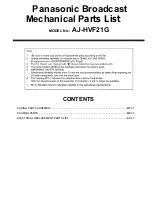
Trojan Battery Lithium-Ion FAQ Guide Rev 06/20/2022
5
MAINTENANCE (CONT.)
How do I use the battery
indicators to troubleshoot
the battery?
The battery has six LEDs that help the user determine the battery's condition. When
the button on top of the battery is pressed, a number of Blue LEDs indicate the state
of charge from 0-25% (1 LED) 26-50% (2 LEDs) 51-75% (3 LEDs) and 76-100%
(4 LEDs). In addition, either a red or green LED will also illuminate. A green LED
indicates that the battery is operating normally and no faults are present. A red LED
indicates there is a fault.
If a fault is present, users can gather an indication of the fault by the present state of
the battery. Faults are typically caused by one of four conditions:
High Temperature (While Charging or Driving)
Low Temperature (While Charging or Driving)
High Current (While Driving or Charging)
Low Voltage (While Driving)
Trojan indicates the battery is
maintenance-free. Does that mean
I DO NOT have to check periodically
or what recommended actions
should I take?
Maintenance-free indicates that the battery does not require watering, equalizing or
maintenance charges, or frequent cleaning of the terminals. We still recommend that
you perform a visual inspection of the battery regularly.
Follow storage and maintenance according to the GC2 48V Lithium-Ion User's Guide
and warranty.
What do the LEDs mean?
The battery has six LEDs that will help the user determine the battery's condition.
When the button on top of the battery is pressed, a number of Blue LEDs indicate
the state of charge from 0-25% (1 LED), 26-50% (2 LEDs), 51-75% (3 LEDs) and
76-100% (4 LEDs). In addition, either a red or green LED will also illuminate. A green
LED indicates that the battery is operating normally and no faults are present. A red
LED indicates there is a fault.
What is a short circuit fault/
condition? Does the recovery
DIFFER from other faults?
A short circuit fault occurs when the battery is powered on and a direct conductive
path is created between the positive and negative terminals. This fault can also be
activated if more than 600A are passed through the battery from an external source.
When the short circuit fault is active, it will not automatically reset. The user must
verify that the cause of the fault has been corrected and then perform the same
procedure used to bring the battery out of storage mode to clear the short circuit
fault.


























